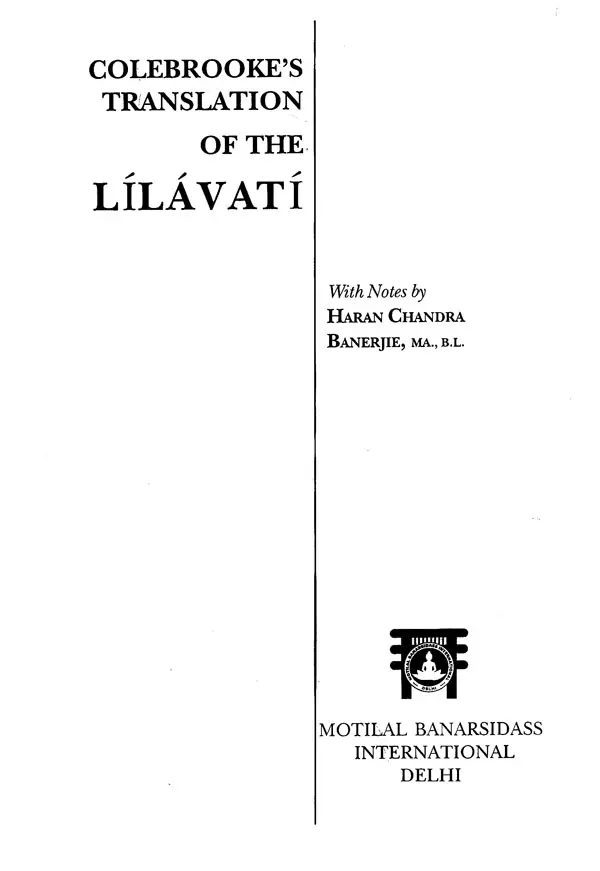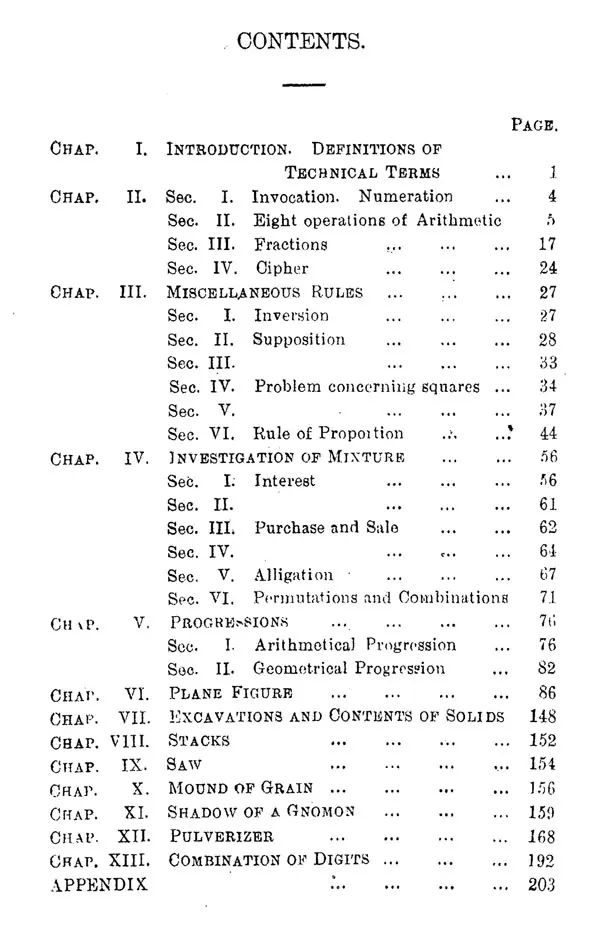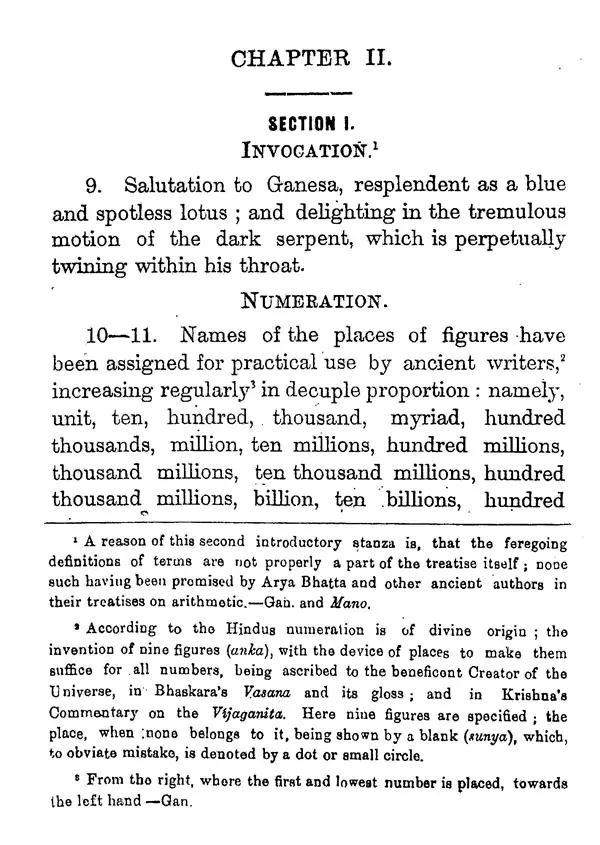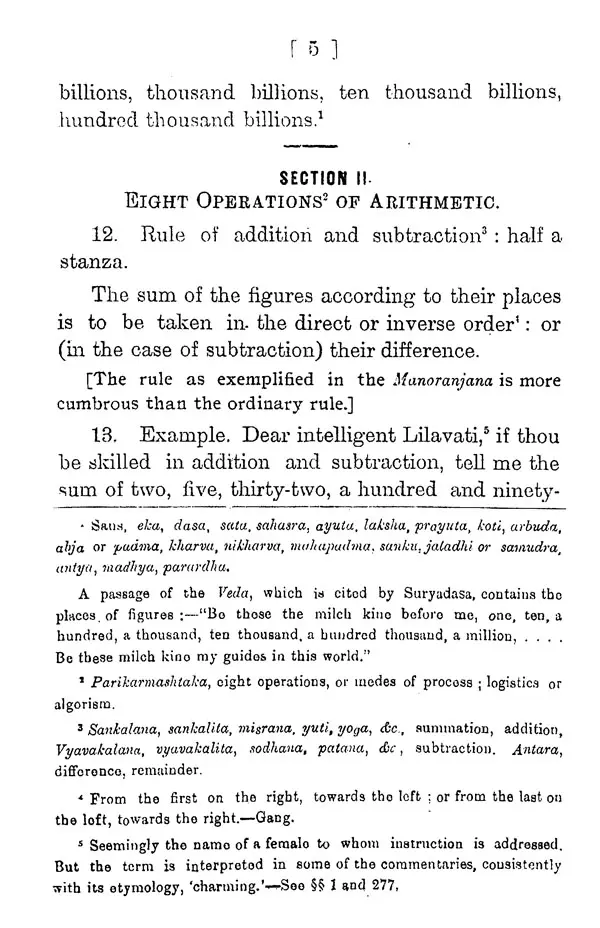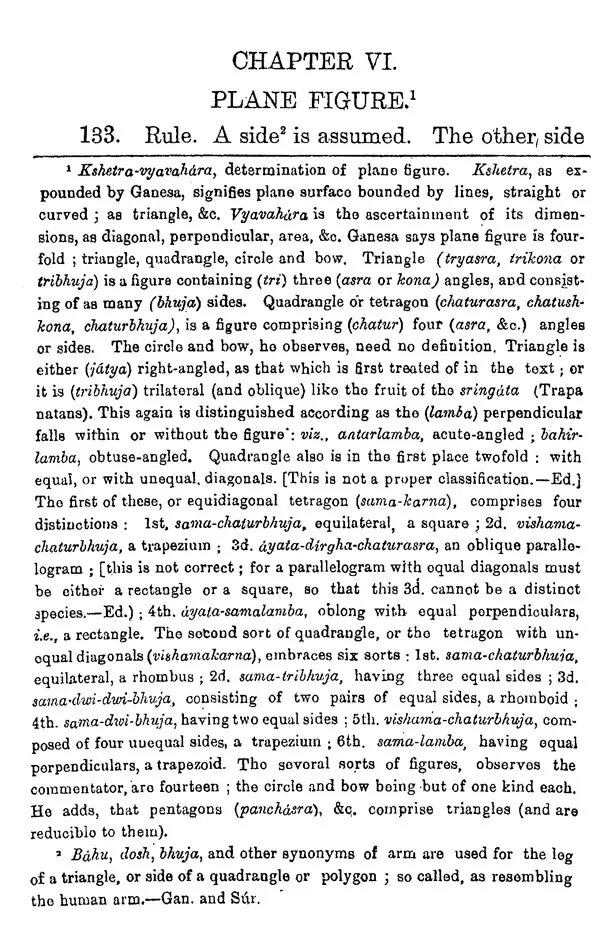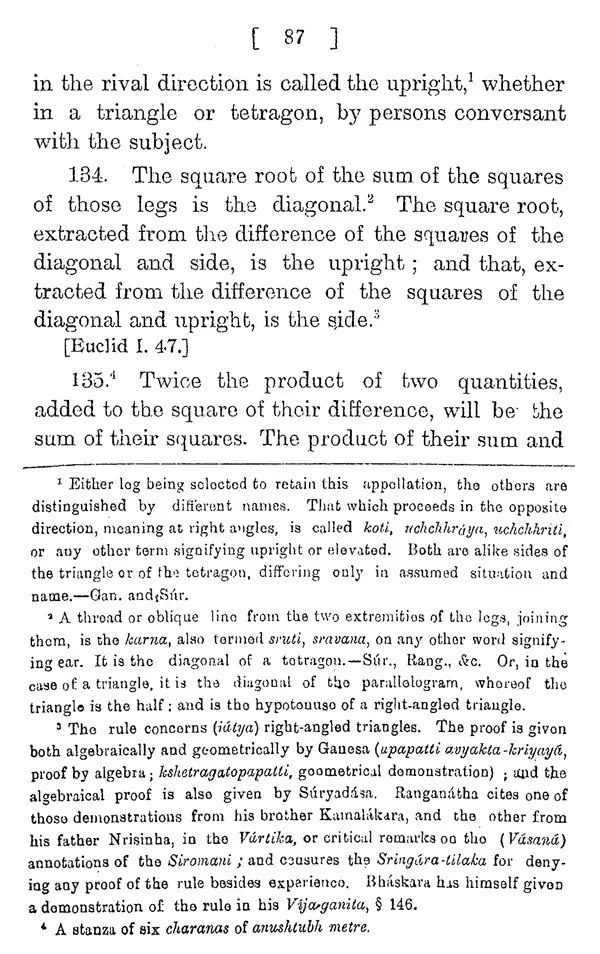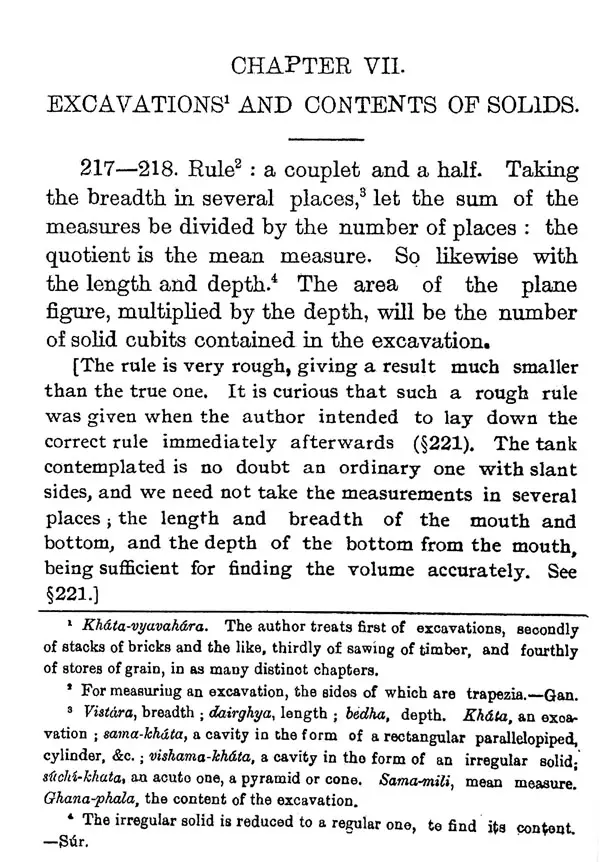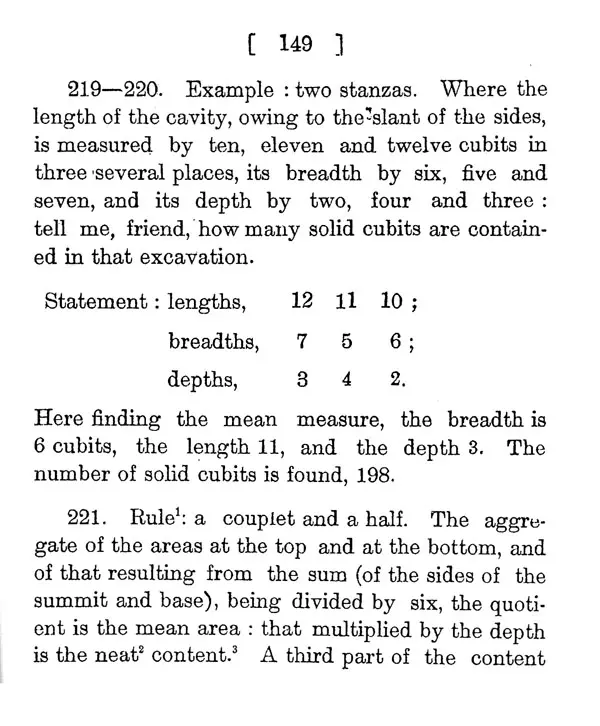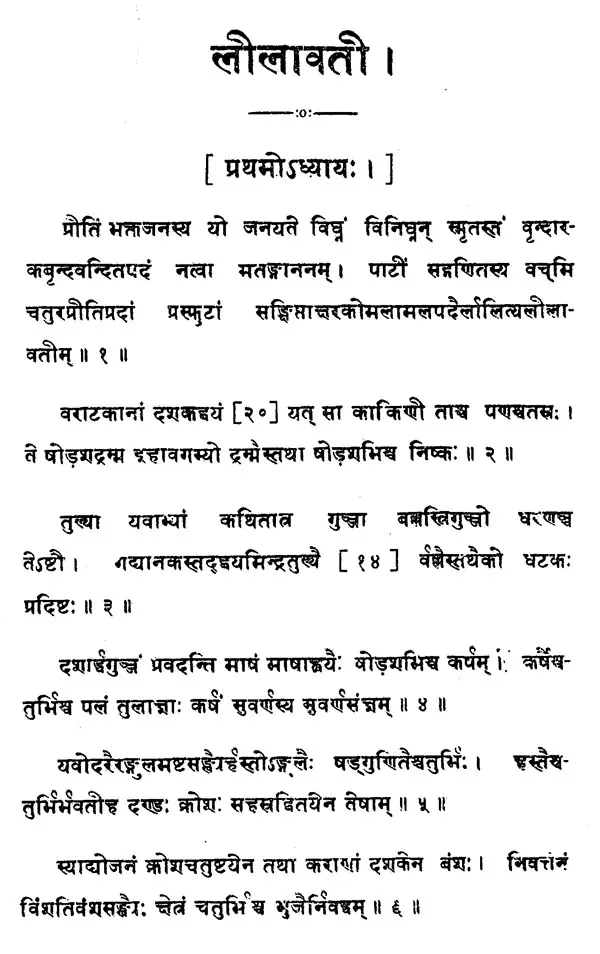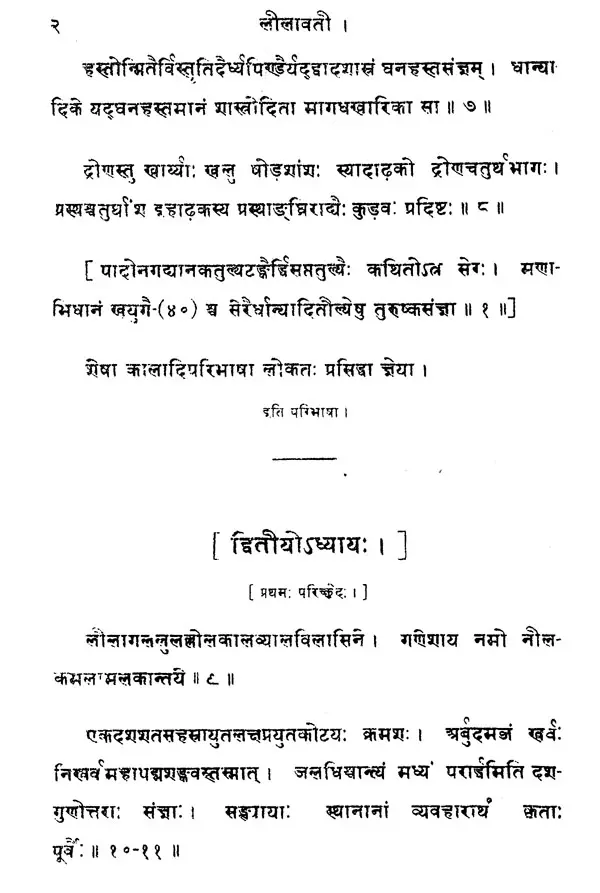
Colebrooke's Translation of The Lilavati
Book Specification
| Item Code: | UAL019 |
| Author: | Haran Chandra Banerji |
| Publisher: | Motilal Banarsidass International, Delhi |
| Language: | English and Sanskrit |
| Edition: | 2022 |
| ISBN: | 9789392510939 |
| Pages: | 364 |
| Cover: | HARDCOVER |
| Other Details | 9.00 X 6.00 inch |
| Weight | 520 gm |
Book Description
This book is a translation of Lilavati, a standard work on Hindu Mathematics written by Bhaskaracharya; this celebrated mathematician and astronomer lived in the 12th Century A.D. This work forms the first part of a larger work of the author called the Siddhantasiromani. Besides dealing with arithmetic, it also deals with Algebra and Geometry. It comprises the four simple rules; extraction of the square root and the cube root; fractions, rule of three; interest; alligation; problems producing simple and quadratic equations; arithmetical and geometric equations; indeterminate equations of the first degree; properties of triangles and quadrilaterals; areas of circles; volumes of spheres, cones and pyramids; solid contents of excavations and several other matters.
In the book the author "Colebrooke" has given translations of extracts from the leading commentaries on the Lilavati. Some of the translated extracts contain expositions of the rules and of technical terms and some contain demonstrations of the rules in a few cases. The Lilavati in Sanskrit is printed at the end, with divisions into chapters and sections corresponding to those made in the translation.
I. Having bowed to the deity, whose head is like an elephant's ; whose feet are adored by gods ; who, when called to mind, relieves his votaries from embarrassment ; and bestows happiness on his worshippers ; I propound this easy process of computation, delightful by its elegance, perspicuous with words concise, soft and correct, and pleasing to the learned.
3. A gunja (or. seed of. Abrus) is reckoned equal to two barley-corns ; a valla, to three gunjas; and eight of these are a dharana ; two of which make a gadydnaka. In like maner one dhataka is composed of fourteen wallas.
4. Half ten gunjas are called a masha, by such as are conversant with the use of the balance ; a karsha contains sixteen of what are termed mashas; a Pala, four karshas. A karsha of gold is named suvarna.
5-6. Eight breadths of a barley-corn are here a finger; four times six fingers, a cubit' ; four cubits, a staff ; and a krosa contains two thousand of these ; and a yojana, four krosas.
So a bambu pole consists of ten cubits ; and a field (or plane figure) bounded by four sides, measuring twenty bambu poles, is a nivartana.
7. A cube, which in length, breadth and thickness measures a cubit, is termed a solid cubit : and, in the meting of corn and the like, a measure, which contains a solid cubit, is a khari of Magadha as it is denominated in science.
8. A drona is the sixteenth part of a khari ; an adhaka is a quarter of a dorna ; a prastha is a fourth part of an adhaka ; and a kudaba is by the ancients termed a quarter of a prastha.
The rest of the axioms, relative to time and so forth, are familiarly known.
**Contents and Sample Pages**
